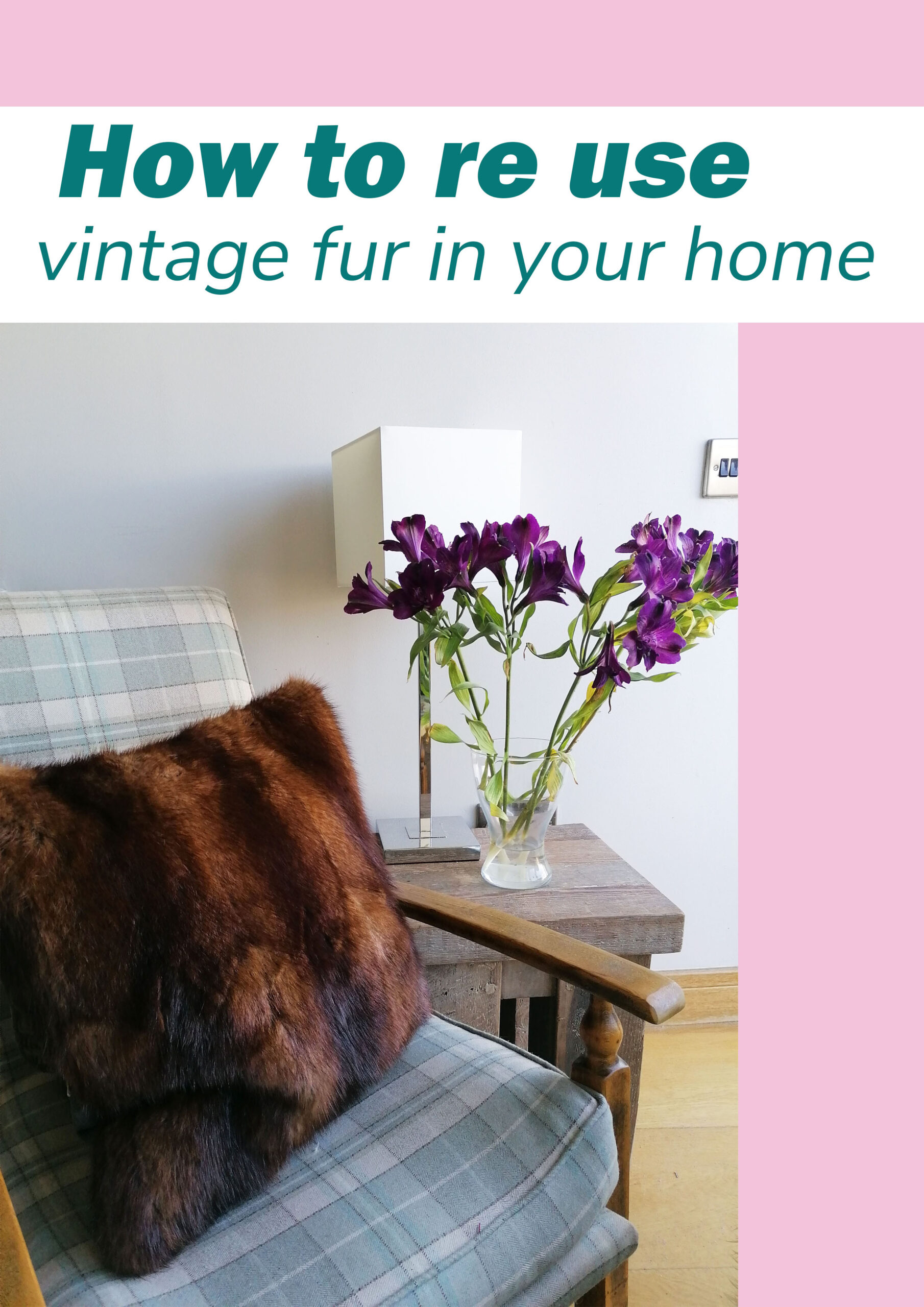
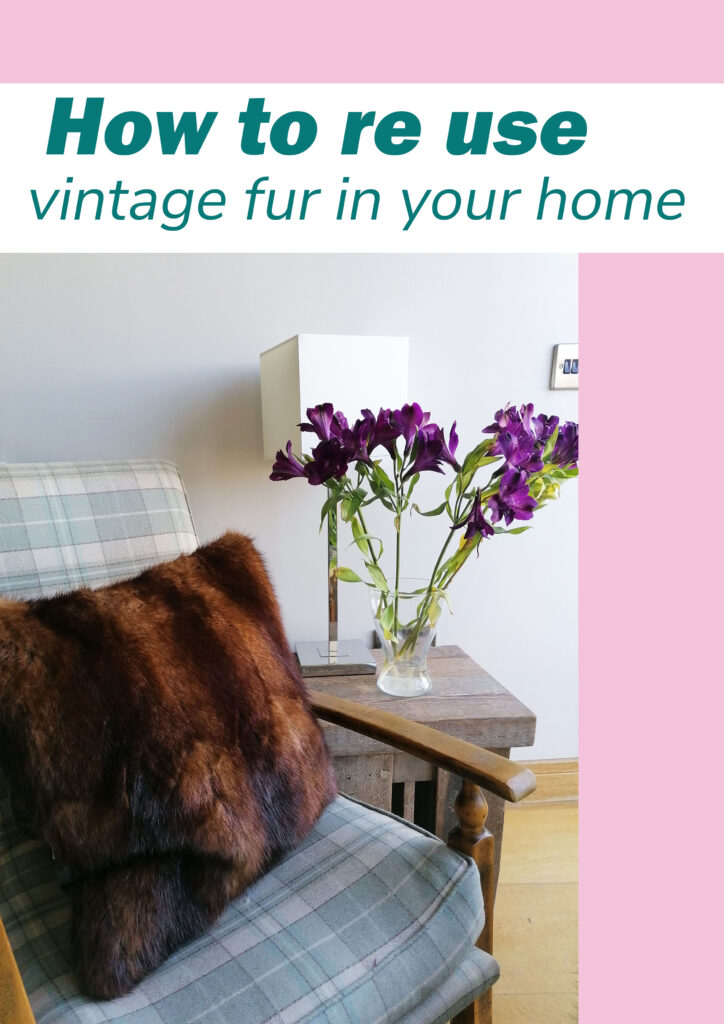
One of the most eco friendly things we can do as a collective is to re-use pre-existing material. This reduces the need to create new raw materials, it reduces energy usage, air and water pollution and even greenhouse gas emissions. It also gives us an opportunity to be far more creative and resourceful with what we make by using what we already have. Over production and over consumption are, quite literally, killing this planet. There’s a great quote by Orsola De Castro, one of Fashion Revolutions co-founders, which comes to mind “the most sustainable garment is the one you already own.”
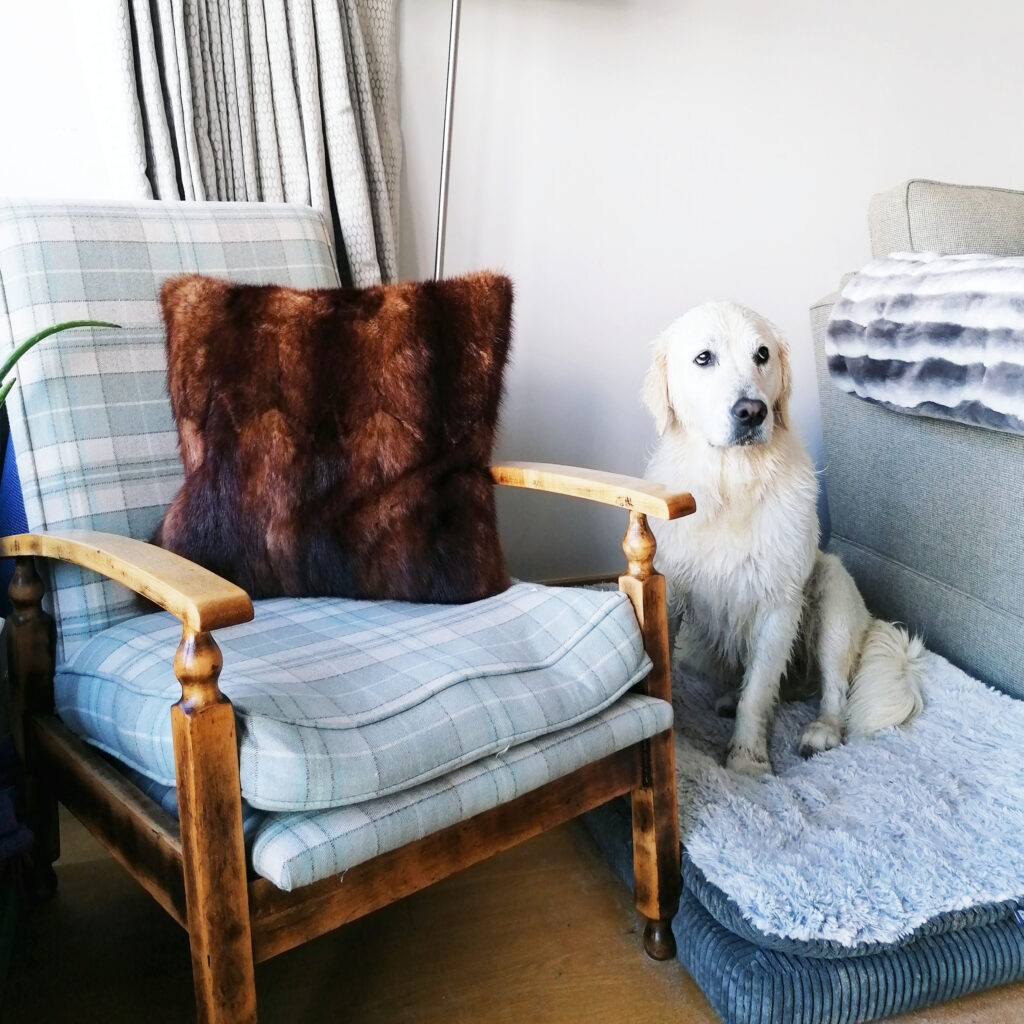
Whilst some people may not feel comfortable wearing vintage fur but don’t want to get rid of it, there is an alternative. Turn your vintage fur into a decorative accessory for your home, like pillows or a throw. One of the most popular remodelling options I have been doing for people is turning old, precious vintage fur coats and jackets into throws and cushions. If you have been lucky enough to inherit one, it’s a really lovely way to repurpose a vintage fur garment especially if it sits unused and unloved in a wardrobe, gathering dust.
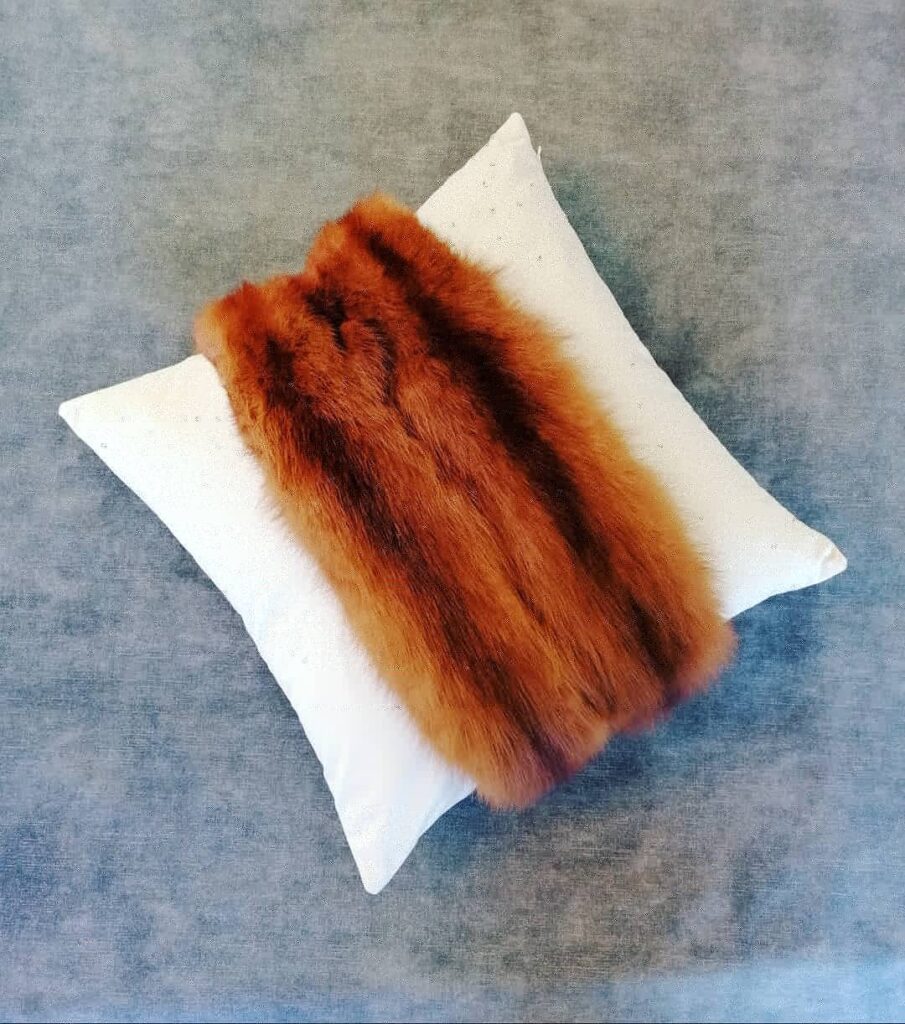
If looked after properly, fur as a material will last for a really long time. It can also be repaired, cleaned and revamped if needed, the longer we keep our textiles in circulation, the better for the environment. The average high street garment has a life span of just 7 wears before it is chucked out and left to rot in the ground. I could go off on a tangent here about the global issues with fast fashion and the mainstream fashion industry, but that’s another blog post for another day.
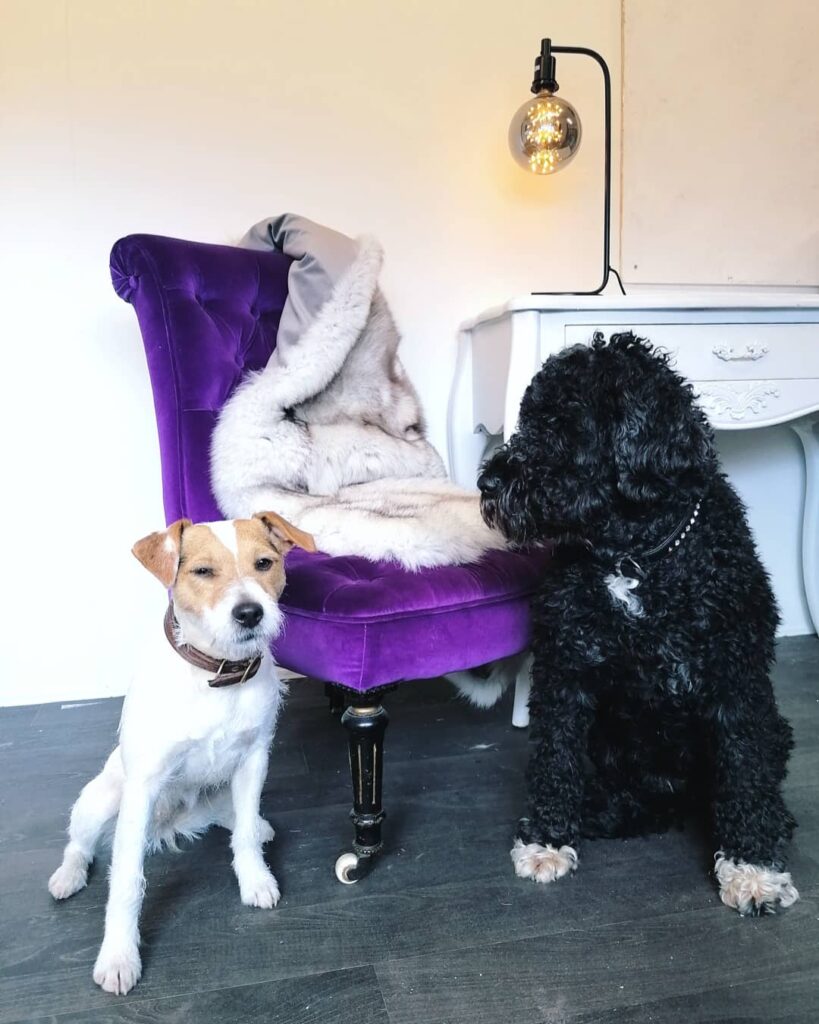
The original shape and construction of the fur garment will depend on what you can recreate. Fur is a very tactile and luxurious material, so it really adds a cosy, hygge vibe to any room. Also if you have pets, I guarantee they will love it! My wee dog Jules is always curling up on my vintage fur gilet, I think she loves it because it is so soft. Just make sure your pet is clean before they coorie in! I prefer to line the throws and pillows with velvet as it fits with the plush, luxuriousness of the fur. Velvet also helps the fur throw cling to sofas /beds better and prevents it from sliding around. You can also add a big pop of colour using a contrast velvet colour.
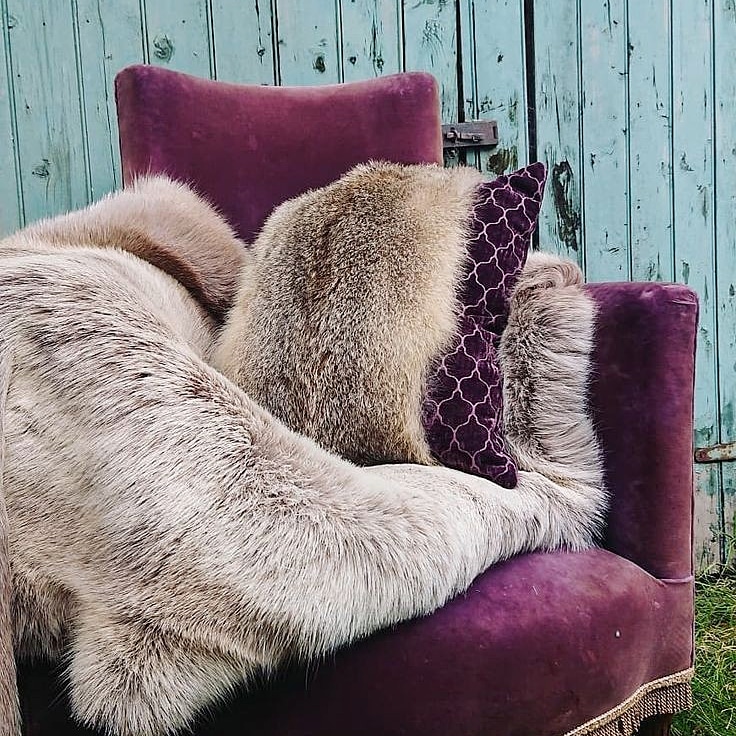
Here are some vintage fur transformations I have done for clients.

From an unloved and unworn vintage fur jacket belonging to my clients grandmother in law..

..To a beautiful, velvet lined fur throw, which can be admired, treasured and most importantly used everyday. I also made pillows to match, being a zero waste designer I make sure I put all the material I am working with to good use.
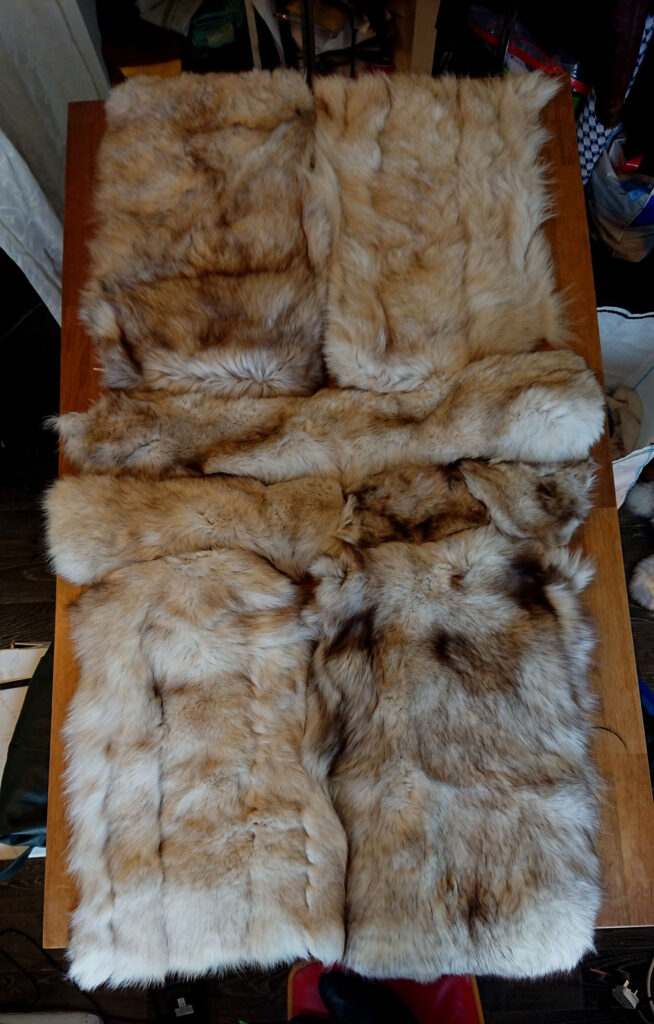
A client came to me with a bunch of vintage fox fur offcuts she had that she wanted made into a fur throw..
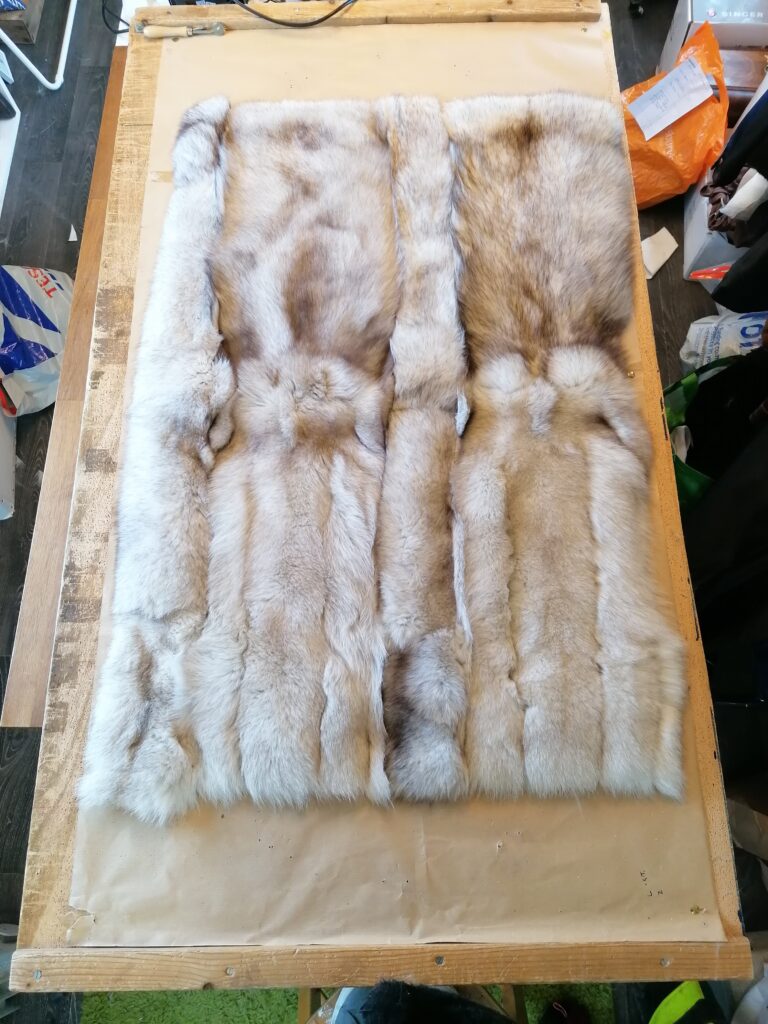
This was the final layout I chose as I liked the symmetrical aesthetic.
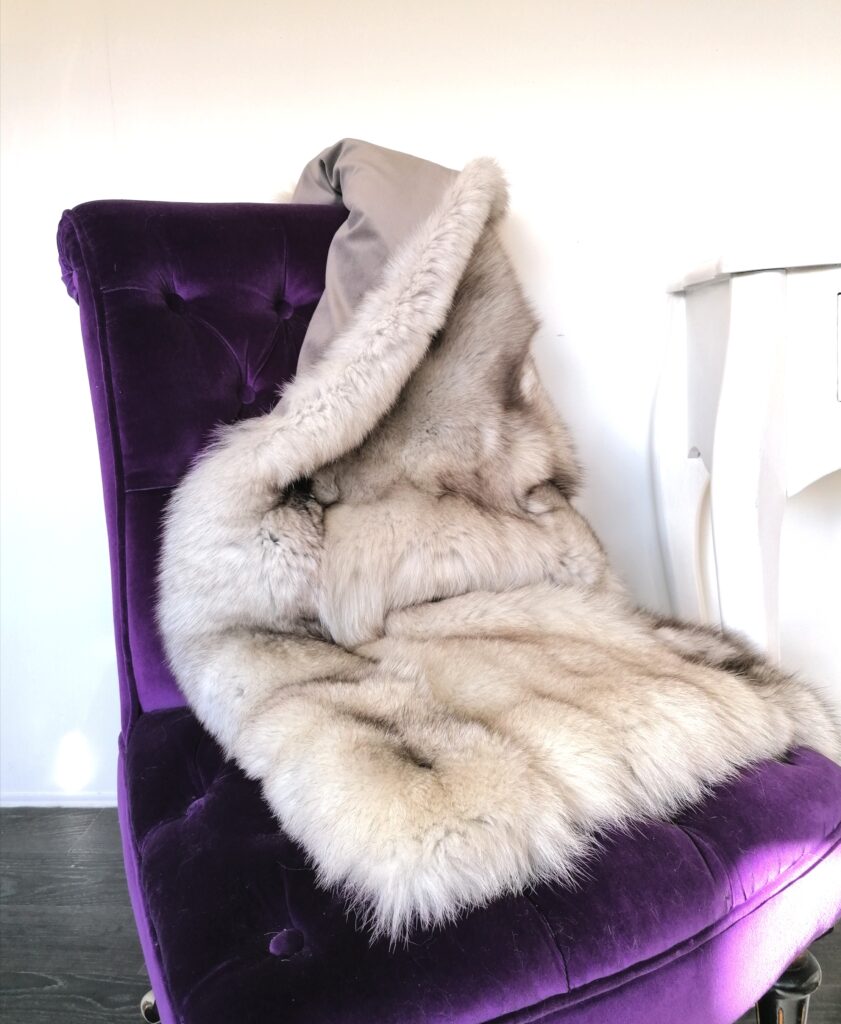
I lined the fur throw in a pale grey velvet that my client chose, it paired beautifully with the silvery tones of the vintage fox fur offcuts.
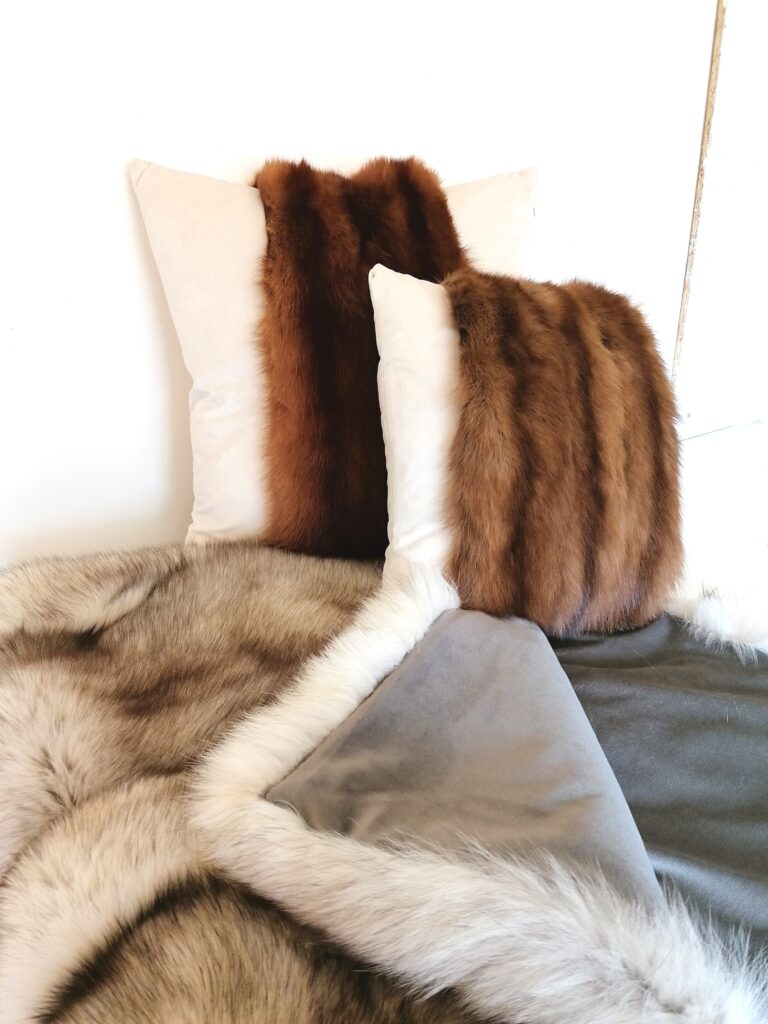
I also made two cushions using vintage mink stoles that had been sitting in a box in the attic. I had some left over cream velvet from a previous job which my client was delighted to have.
If you have been lucky enough to inherit a fur coat, and you don’t wear it but want to keep it, upcycling your vintage fur heirloom into homewares is a really lovely way of keeping those precious memories alive. One thing that I love when doing commissions for people is hearing the stories of times gone by of memories of grannies/aunties/mums/pals wearing fur or of mischievous tales of loved ones up to no good. I hope this has given you some inspiration for reinvigorating some old piece of clothing you may have! I’d love to hear if you have upcycled something, what was it? Let me know in the comments below!

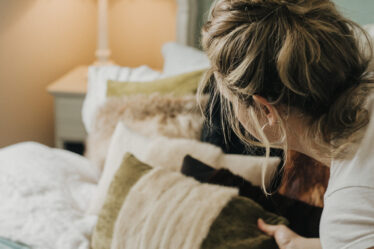
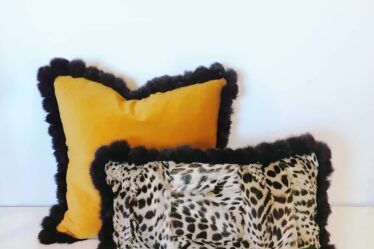
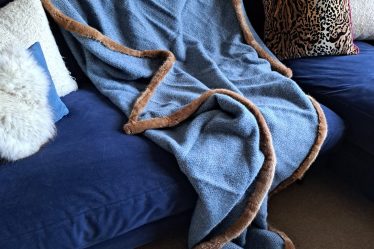
I would like to make a throw with my old fox or coyote long jacket. The fur is so plush and my small dogs would love it.I have been waiting to find something to use it for. I live in Arizona , in the US.Do you know someone near here that could help me?
Hi Judith, thanks for reaching out. I do not know anyone in the US sorry no. I would have a google search and see if you can find someone more local to you, Pinterest is also worth looking at. Let me know if you find someone! Millie x
Your work is beautiful! I have several pieces that I have inherited from women my height 5’10” that are full length long hair beaver coats that i would love to turn into blankets!! As well as several coyote pelts! Can I ship to you from the USA? Rough estimate for turning coats I into blankets?
Do you need a special sewing machine to sew fur? What specialized equipment would I need to do this at home? What if the fur is dry and cracking already, do you recommend only using fur in good condition, or if it’s cracking can it be salvaged?
Hi Nicole, yes you need a machine called a cup seamer. You can sew things by hand, but it depends on the size of project you are taking on. Small repairs could be done by hand with a sharp needle and thimble. But any large scale projects to sew the pelts are done by machine mostly. Re equipment, there are lots of different things you need depending on what you are trying to do with the fur. For basic repairs I would say a sharp knife for cutting fur (never use scissors, and always cut from the pelt side not the fur side), a thimble and sharp needle are your main tools. Don’t use glue.
If the fur is dry and cracking, it is unlikely you’ll be able to rescue it. Once a pelt dries out it usually is beyond repair, although I haven’t experimented with trying to treat pelts. I know with leather you can rescue dry and cracked leather, as far as i’m aware it doesn’t work with fur pelts. I only work with furs that are in good condition, the whole point is to make something that will last for another 50 years or so! But it also depends on how you will be using the fur, if it’s something that won’t get a lot of wear and tear and is more decorative and not under tension, you may get away with working with pelts that are more fragile. Cut a few small pieces out from the fur and try sewing them by hand. If the seam holds under a bit of tension, you should be good to go. If it doesn’t hold, it’s unlikely the fur is usable. Hope that helps!
Hello, do you have suggestions for projects using fur scraps, other than pompoms or jewelry? I have left over pieces that are the size of a TicTac box or small orange. These pieces will often come from fur hats (ear flaps). I don’t want to throw them away but am at a loss for ideas. Thanks
Hi Nancy, you could sewn them together to create a larger piece of fur to make into something? Or you could always use them to embellish something by cutting them all into the same shape and decorating a cushion or a bag, like furry spots!
I think it is wonderful that you are repurposing furs into usable items. I grew up with my mother making our Parkas with fur ruffs to keep us warm when it was freezing out (Northern Alaska!). You have inspired me to use the furs I have into home decor. There is no use in Texas (where I now live) for fur coats. 😂 Pillows? Yes! Thank you.
I’m delighted to have inspired you Trish! Happy Sewing!
What is the easiest way you have found to square the fur from a deconstructed coat? I will be making a throw.
Hi Marie, unfortunately there is no quick and easy way to do this, as each fur is made differently and each fur requires different techniques depending on the pattern of it. Sometimes to find a square/rectangle shape you have to take apart each pelt and re sew them together. If you begin by unpicking everything flat, and filling in the armholes, that should give you a rough shape to work from.